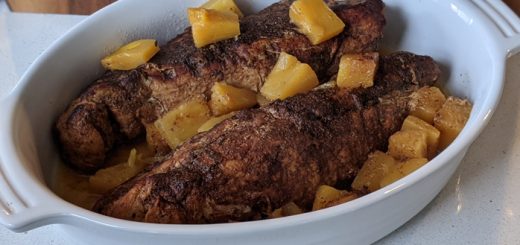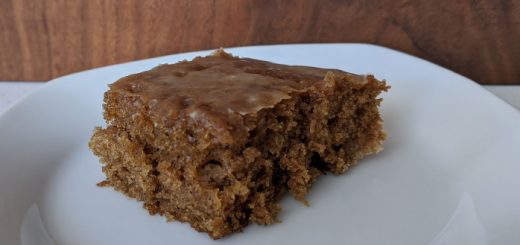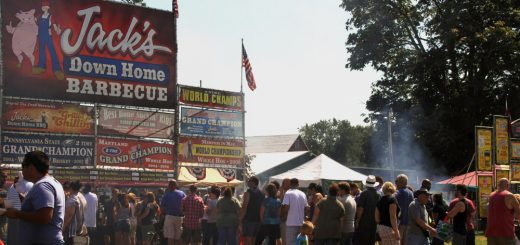The taste of roasted meat and vegetables on the grill can add a smoke or charbroiled flavor you can’t really accomplish in an oven. For those in milder climates or the hard-core winter grillers, a holiday meal cooked in a smoker or on a grill is really something special—and the time it takes is realized by those who get to enjoy it. And the heartier meats and herbs used in the winter (such as duck, lamb, and rosemary) are all the better when grilled or smoked. But it helps to know what you’re doing.
Thus, some tips for grill-roasting. For the most part I’ll refer to meat, since the colder temperatures may not make it worthwhile for some people to stand outside monitoring spuds or squash.
Gas ‘er Up (or have plenty of charcoal)
Low, slow and steady is the mantra. You’re going to go through quite a bit of fuel/charcoal.
Feeling Hot, Hot, Hot
Preheat the grill/get your charcoal heated about 15-20 minutes before you put the meat on (veggies can go on later).
Is it Hot in Here?
Monitor the temperature. Ideally you should use a grill thermometer that reads up to about 550° F, and set it in a vent. For a non-scientific temperature gauge system the following seems to be quite common: Hold your open hand face down about 5 inches from the grill grates. If you have to move your hand in about 2 seconds, the temperature is Hot (about 450°-500° F). The temperature is Medium (350°-400° F) if you have to move your hand in 5 seconds, and Low (250°-300° F) if you have to move your hand in 10 seconds. Recipes or your own experience will dictate what is a good temperature for you to place the food on the grates.
Optional Flavor Enhancers:
Smokin’—To add smoky flavor (especially for meats) sprinkle some wood chips directly onto the charcoal. For gas grills, place wood chips in a metal pan (available at outdoor shops specifically for grills, but you can even go to a dollar store or Salvation Army and get something like a small loaf pan for next to nothing) and place it directly over the heat source; you can leave it as-is or cover with foil with some holes poked into it to allow the smoke to filter out. (Look…smoking is an art, and there’s a lot of information out there on it. For instance, dry wood or wet? What type of wood for the food you’re cooking? That’s a whole other post. Might have to ask a pro to guest write that one.)
Drip Pan—Add about 2 inches of hot water* to a foil pan. Place the pan under the food you’re cooking. Make sure the liquid you use is not cold. You can even add some herbs, onions and celery to the liquid. This not only adds moisture to the food you’re roasting (especially for lean meats like turkey or venison), but additional flavor. You can get the foil pans at the dollar store. Keep an eye on this, however. Monitor the liquid so it doesn’t burn off and add more if it gets too low. (Note: I did some research and found that humidity can slow the cooking process as the moisture inside the covered grill evaporates and cools the meat. This creates more time needed for connective tissues and fats to melt. Just make a note of that and add some time to your cooking—and test the temperature of the meat to determine when done.)
* I have found discrepancies on what type of liquid should be used. My husband uses apple juice in a drip pan when slow-cooking ribs, for example. Other people say broth, beer, fruit juices or wine can be used. One resource said the molecules released from juices and what-not are too small to taste, so drink your beer rather than pouring it into a drip pan. Trial and error…and totally up to you.
Indirect Heat
To properly roast, your food needs to be placed over indirect heat, not over the heat source. For gas grills, turn off one side of burners and put the food on that side. For charcoal grills, push the charcoal over to one side.
Put a Lid on It
Once you put your food on the grates, don’t keep checking it. Keep the lid on, because every time you open the grill some heat escapes and it takes a while to get back up to temperature. That being said….
Rotate
At least once or maybe even twice (in the middle of the roasting time) you will want to spin the meat so the same section doesn’t overcook. Even though it’s sitting on indirect heat, the heat source is closer to the grate than the top portion.
Now I’m hungry… I’ll be highlighting recipes for grilled holiday feasts in my next post.






